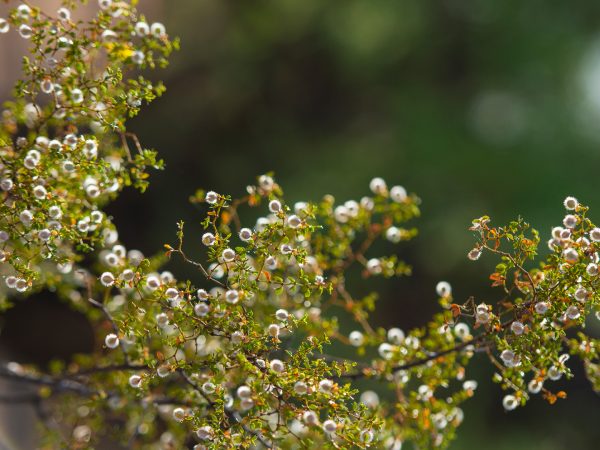Cleansing With Chaparral?
I’ve been advised to take supplements of chaparral for weight loss. I understand that it also reduces inflammation in the body. Is it safe and effective?
Andrew Weil, M.D. | December 27, 2017

Chaparral (Larrea divaricata) is a desert shrub that grows in Mexico and the southwestern United States. It is also known as greasewood and creosote bush, because of the distinctive tar-like fragrance of its tiny leaves. The odor is very strong after a rain, a unique and pleasing desert scent.
Historically, Native Americans made tea from the leaves of this plant to treat chicken pox, colds, diarrhea, menstrual cramps, pain, snakebites, skin disorders, and rheumatism. In more recent times, others have promoted it for digestive disorders, colds and other respiratory tract infections, skin problems, cancer, arthritis, tuberculosis, urinary tract infections, and sexually transmitted diseases. You can buy chaparral tea or supplements in capsule, tablet or tincture form.
The leaves contain a powerful antioxidant – NDGA (nordihydroguaiaretic acid) – that has been used as a food preservative and may account for some of its medicinal properties.
Despite its historical use, I don’t recommend taking chaparral internally for any indication. (The tea tastes terrible and gives you nasty burps.) I haven’t seen any scientific evidence showing that it is effective for any of the conditions for which it is so often recommended. For the record, the U.S. FDA and Health Canada advise against using products containing chaparral due to safety concerns. It is not sold in Canada because it is not an authorized health product. Chaparral has been linked to rare cases of kidney and liver dysfunction, including hepatitis. According to the FDA, some severe cases of liver injury linked to it have required liver transplants. Side effects include stomach pain, nausea, diarrhea, and fever. Additionally, chaparral can interact adversely with drugs that affect the liver including acetaminophen (Tylenol) and statins.
I do recommend chaparral for topical use. Mexican herbalists have long valued it for treating eczema and other skin conditions, and I find that it works well, often better than pharmaceutical products. You can buy chaparral lotions or salves from stores that sell herbal preparations. If you live in an area where chaparral grows, you can make your own remedies from it. To make a poultice, steep leaves in hot water until the liquid has a strong smell, then soak a cloth and apply it to the affected area. If a large area of skin is involved, add a liter or so of strong chaparral tea to a bath that you can soak in.
Andrew Weil, M.D.











